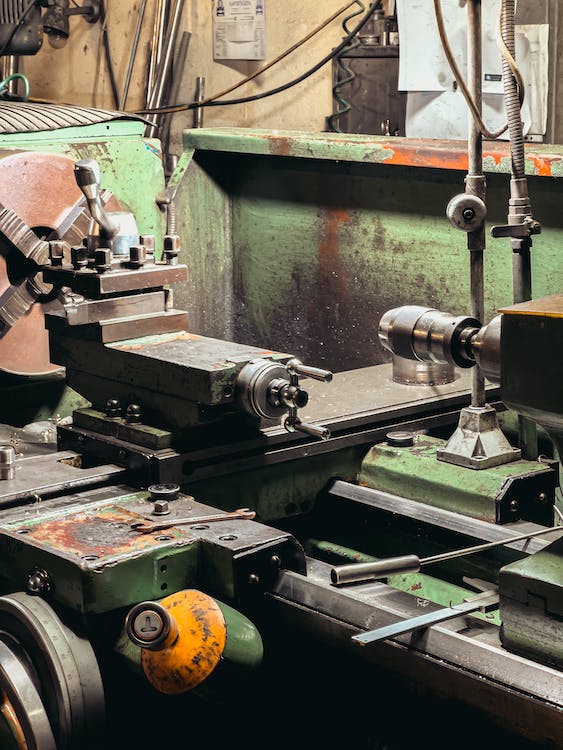Metal Lathe Basics For Newbies

You must be familiar with the lathe machine as a machinist or CNC specialist who spends their days in close proximity to vertical mills. Though modern lathe machines are incredibly sophisticated, their history dates back to 1300 BCE in ancient Egypt, making them one of the earliest examples of technology.
Before to the Industrial Revolution in the 18th century, lathes were primarily employed in France to manufacture wooden goods (invented around 1569 C.E.). Nevertheless, in England, the metal lathe was modernized.
This article will delve into the specifics, discussing the various kinds available, how to become proficient with them, and more. Well, so let’s begin.
A lathe is what?
A lathe can be used to cut or shape materials like metal or wood. For the purpose of shaping a piece of wood or metal, it rotates the material about an axis while a cutting tool remains stationary.
Sanding, drilling, cutting, deforming, and turning are just some of the processes that may be accomplished with the help of these equipment during the production of a wide range of goods. Metalworking, thermal spraying, glass processing, and fine-tuning of wood are just a few of their many jobs.
The “Mother of All Machine Tools” is one of the oldest machinery tools still in use today, and it may be used for a wide variety of production processes.
An Explanation of How a Lathe Functions
The first step involves positioning the workpiece between the lathe’s headstock and tailstock. The chuck, which clamps down on the outside of the workpiece to keep it in place, is fastened to the belt.
At the second stage, a spindle driven by an electric motor is used to rotate the workpiece. It induces a rotational motion in the workpiece about its longitudinal axis.
Third, a cutter is set in a tool holder that keeps it at the right distance from the rotating workpiece so that its blades may make the necessary cuts. Cutting tools can be classified by the shape or material they are used to create.
 What Sets a Metal Work Lathe Different From Its Wooden Counterpart
What Sets a Metal Work Lathe Different From Its Wooden Counterpart
Despite their similarities, not all lathes can be used to make the same thing. You can’t use a lathe designed for making wooden things on metal, for instance.
Tendency of the Engine
Cast iron: A lathe’s engine power is significantly higher for casting iron than for metal.
Wood: The engine is significantly weaker than average.
Radial Velocity of the Rotor
In contrast to woodworking lathes, metalworking lathes often have a greater range of rotational speeds.
Wood typically does not have a variable speed and can rotate between 500 and 1200 RPM.
Cutlery dimensions and quality
Lathes for metal work typically have larger, sharper blades because of the greater thickness of the material being worked.
Blades for a woodworking lathe are duller and smaller than those for metal lathes since they need to cut wood.
Just what tasks do lathes perform?
Since prehistoric times, people have used lathes to turn raw materials into useful objects. These devices have been used to form materials all the way from ancient Egypt and the Industrial Revolution in England to the present day.
Where can I get the right lathe for my needs?
What you need depends on the stuff you’re working with, the room you have available, and your starting budget. Engine power, rotation speed, blade size, and other characteristics vary widely between models. It’s important to have a machine with a strong engine and varied speeds when working with metal. When compared to metal lathes, wooden lathes can use duller, smaller blades because they don’t need as much power.
Here’s a link to a few high-quality metal lathes available: https://steel.tools4.co.za/product-category/lathes/
Comments
Add comment